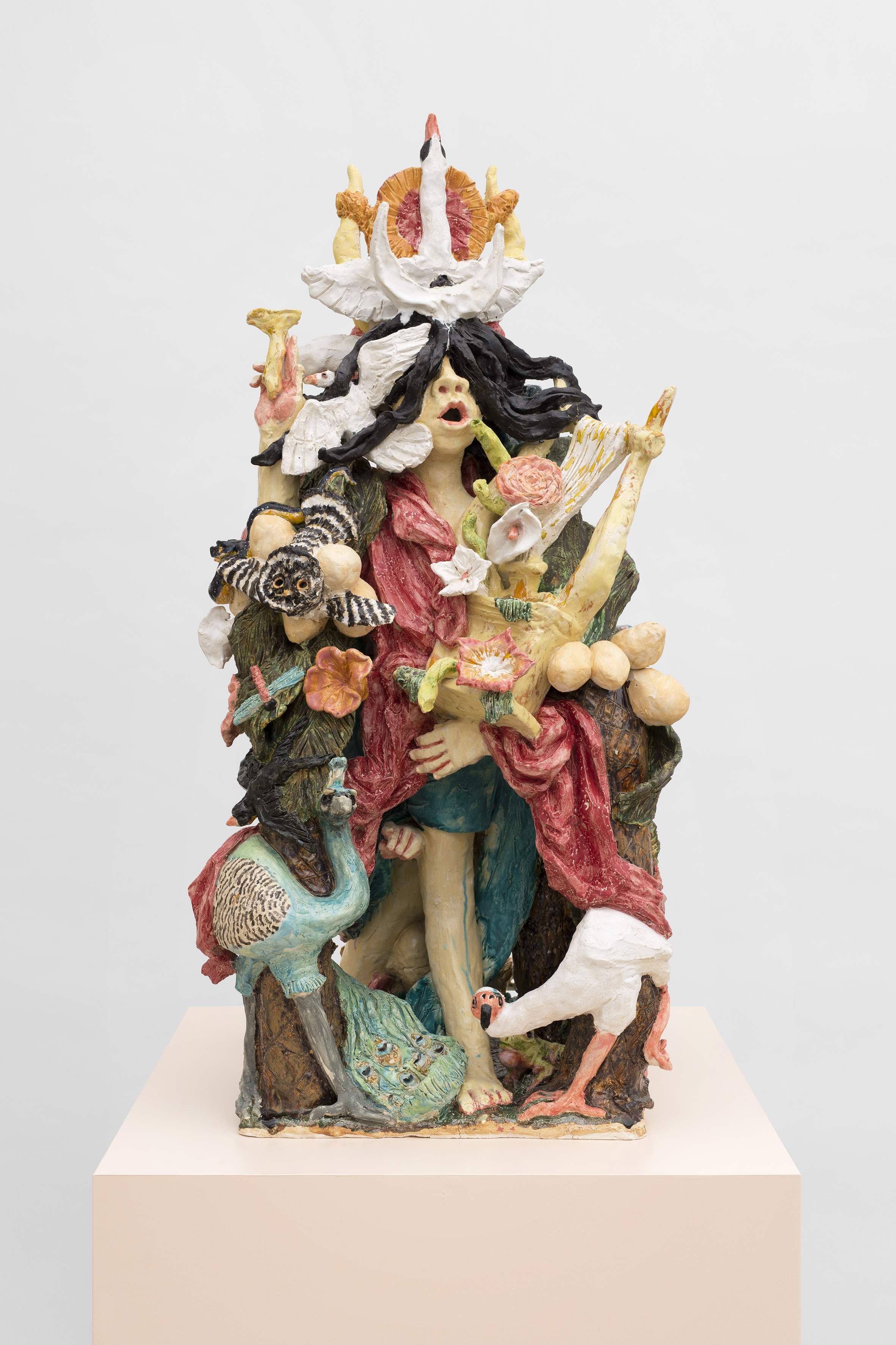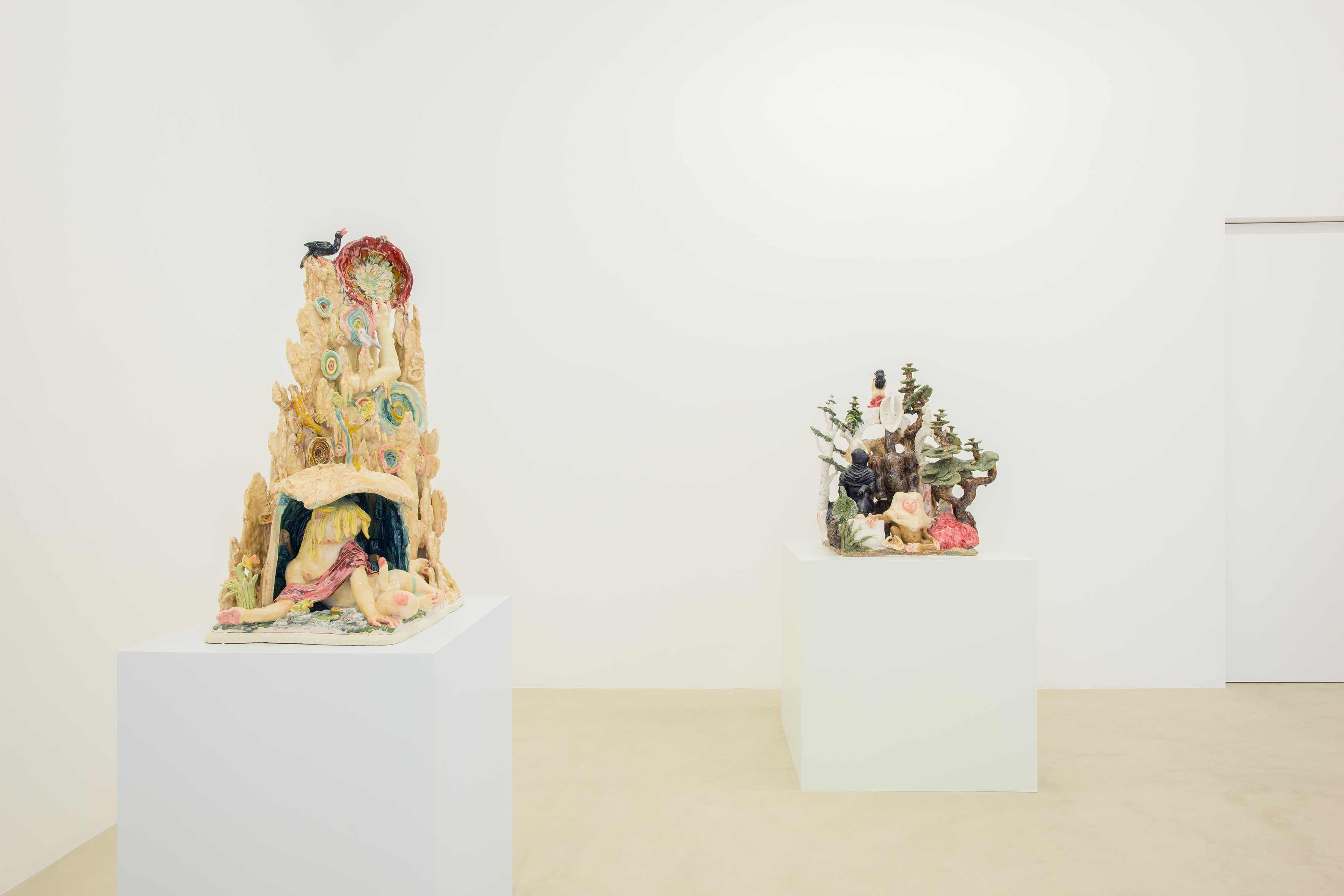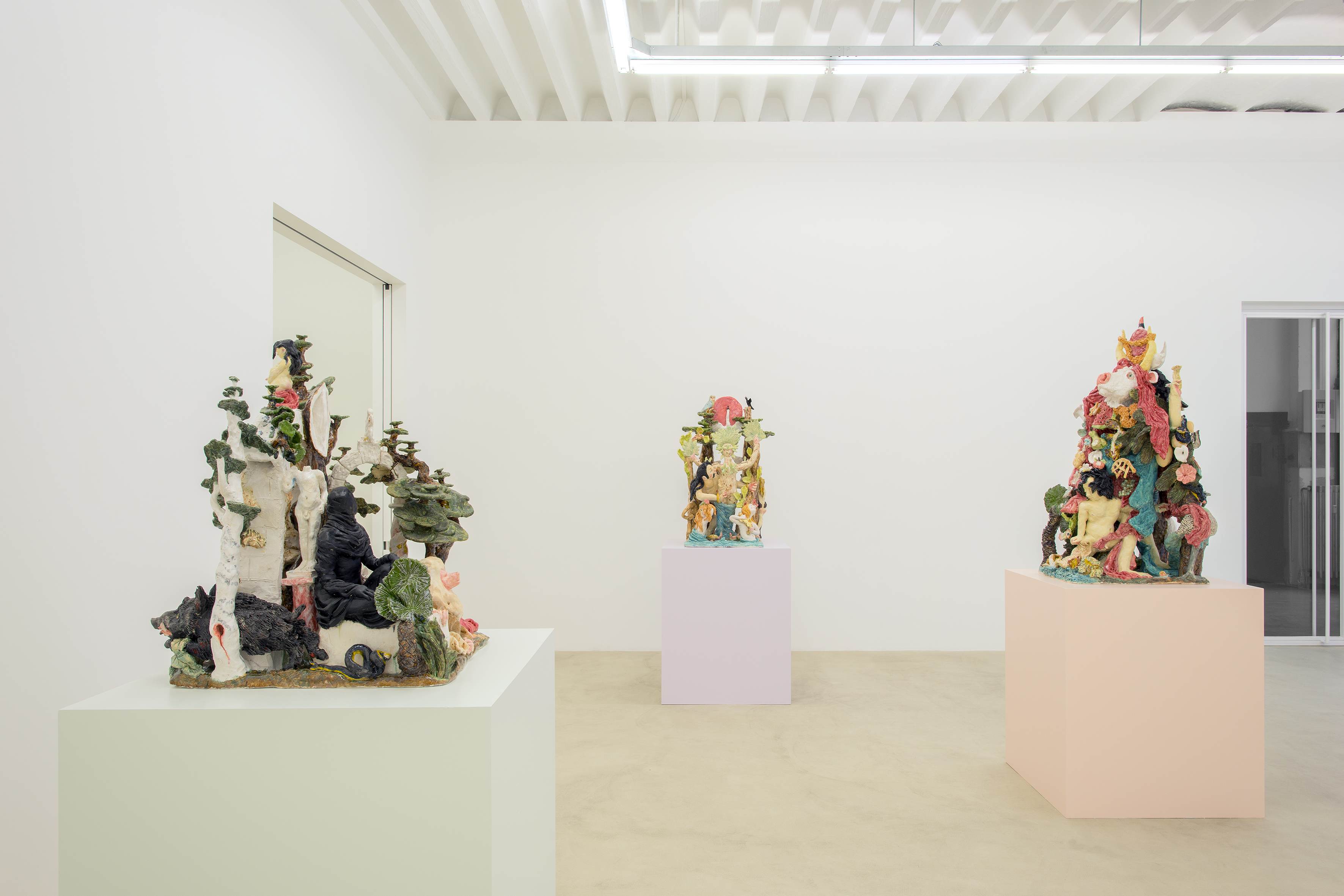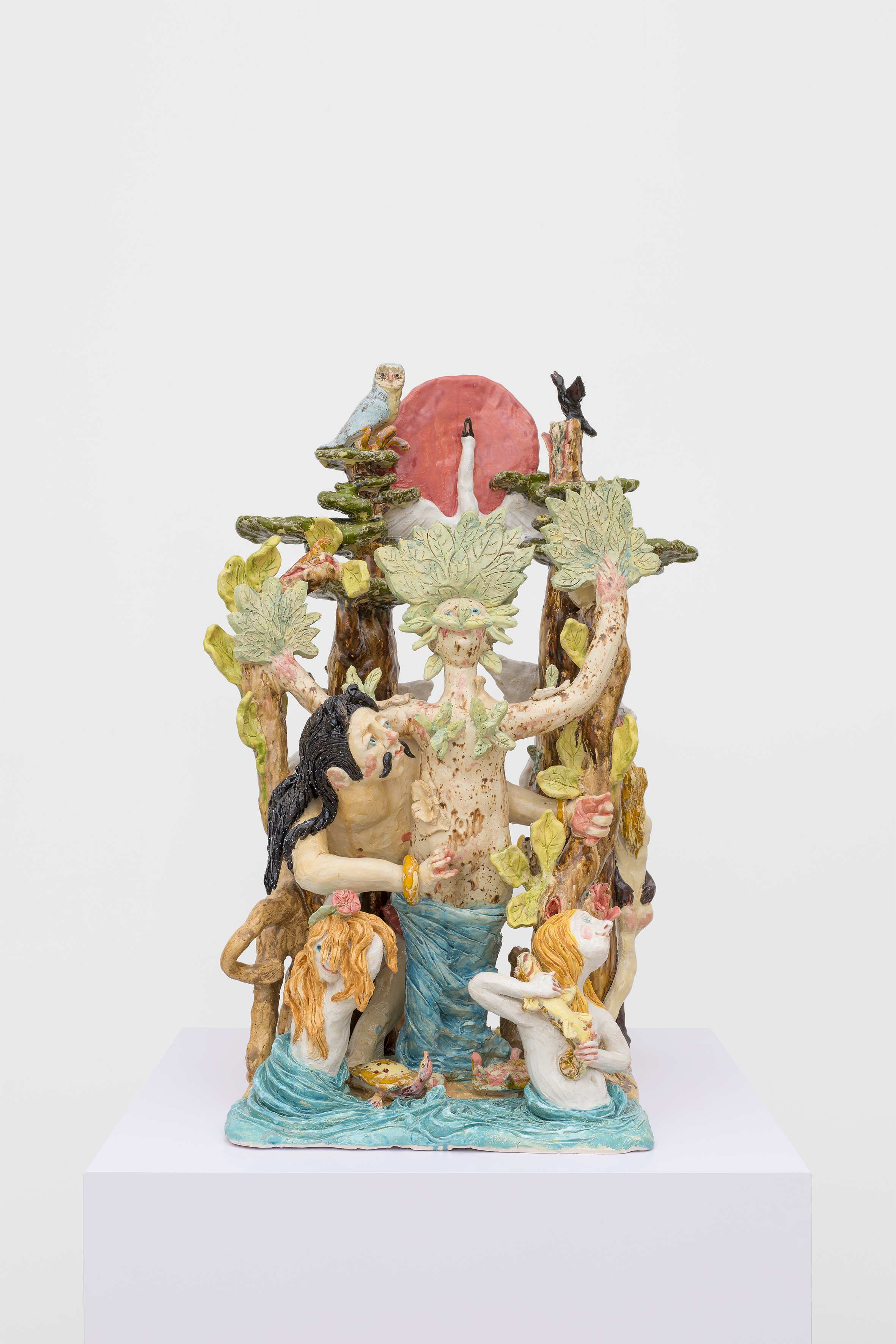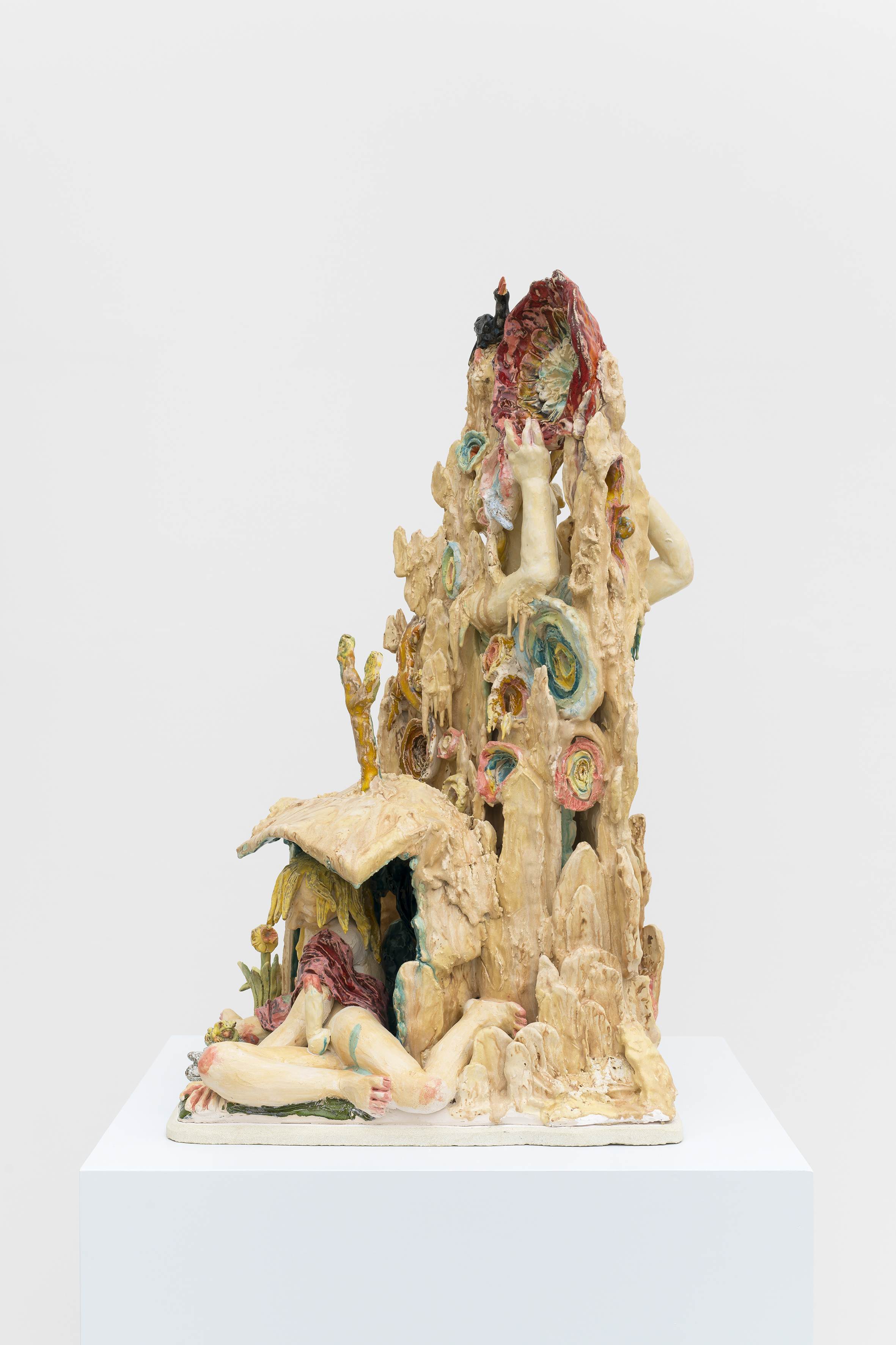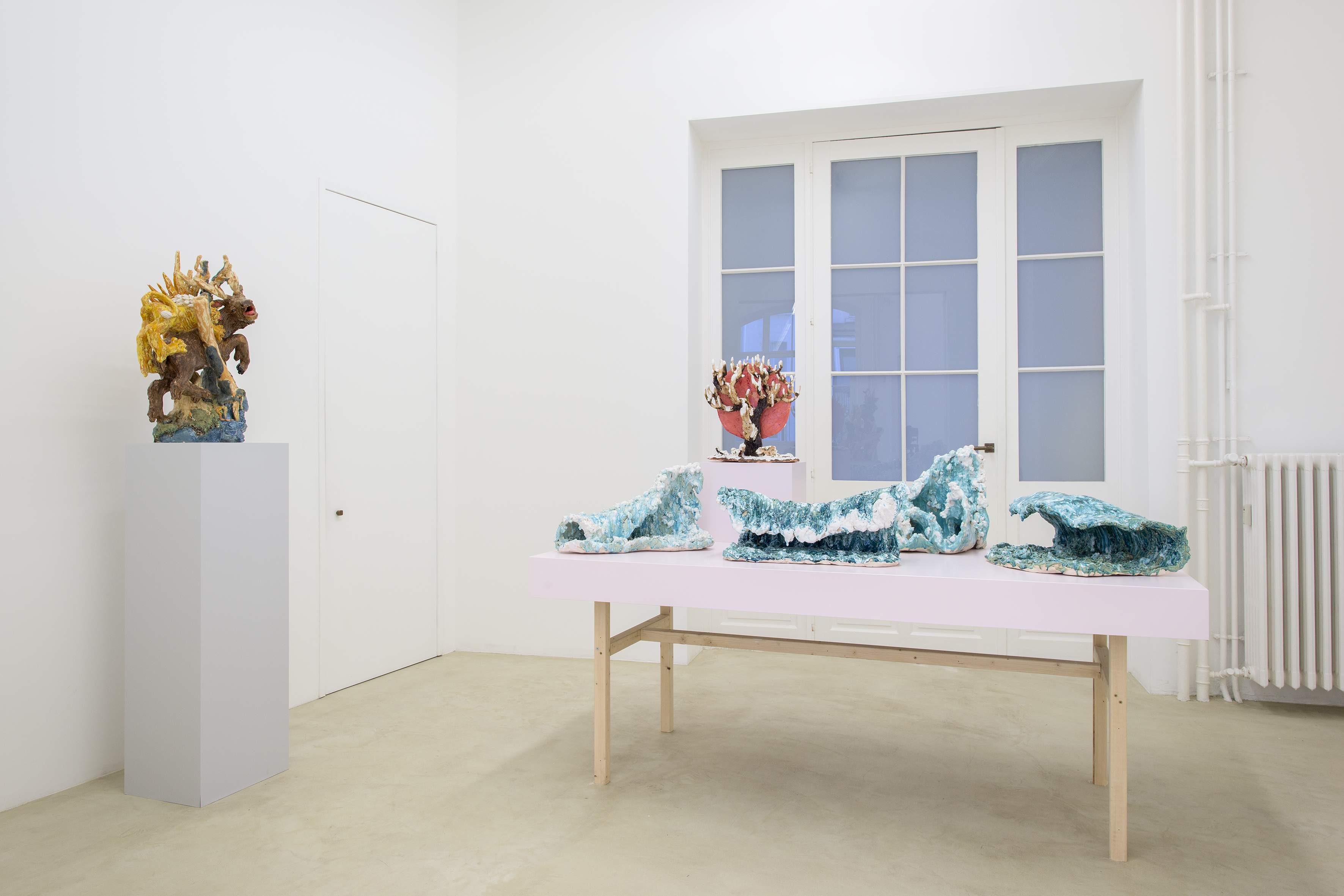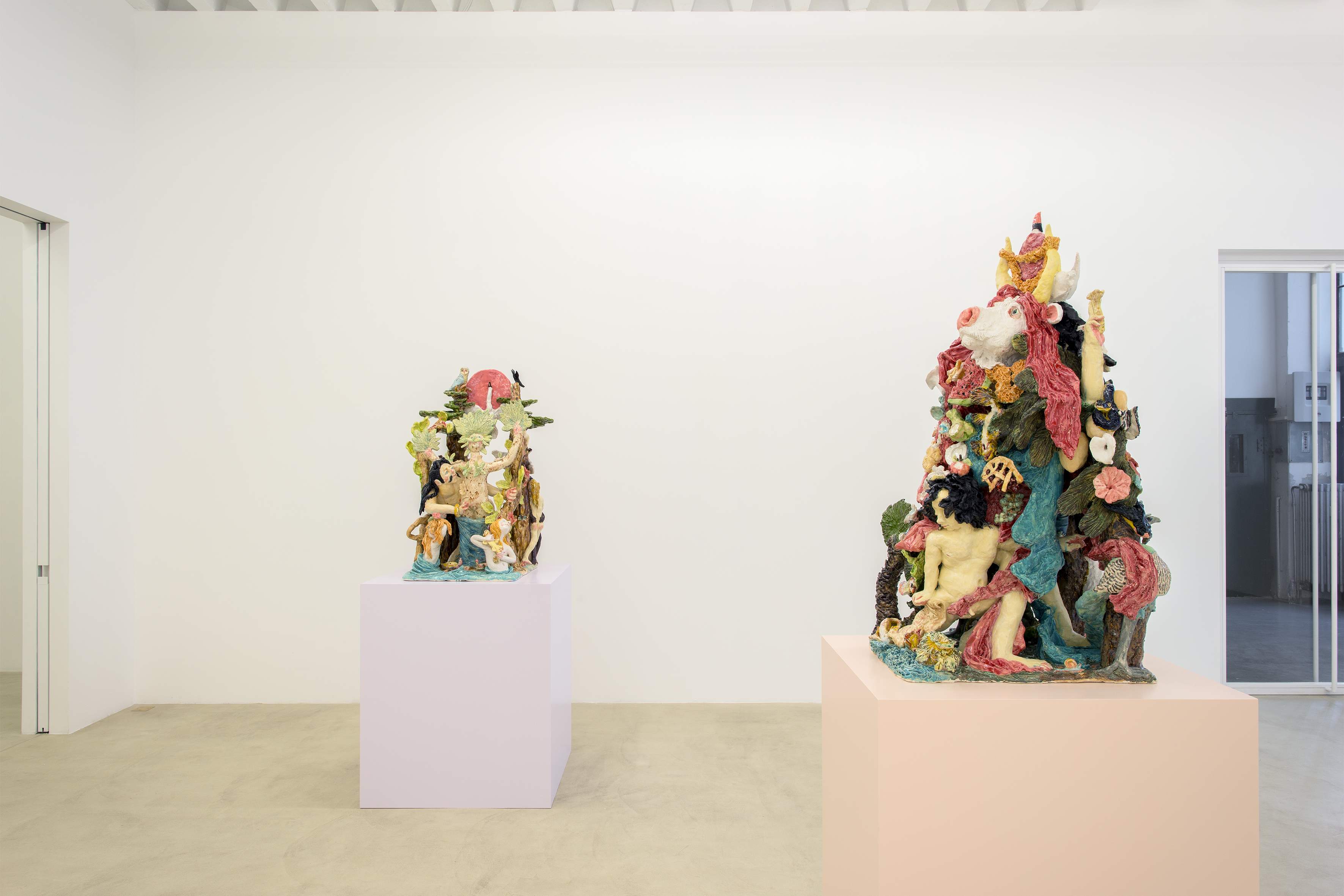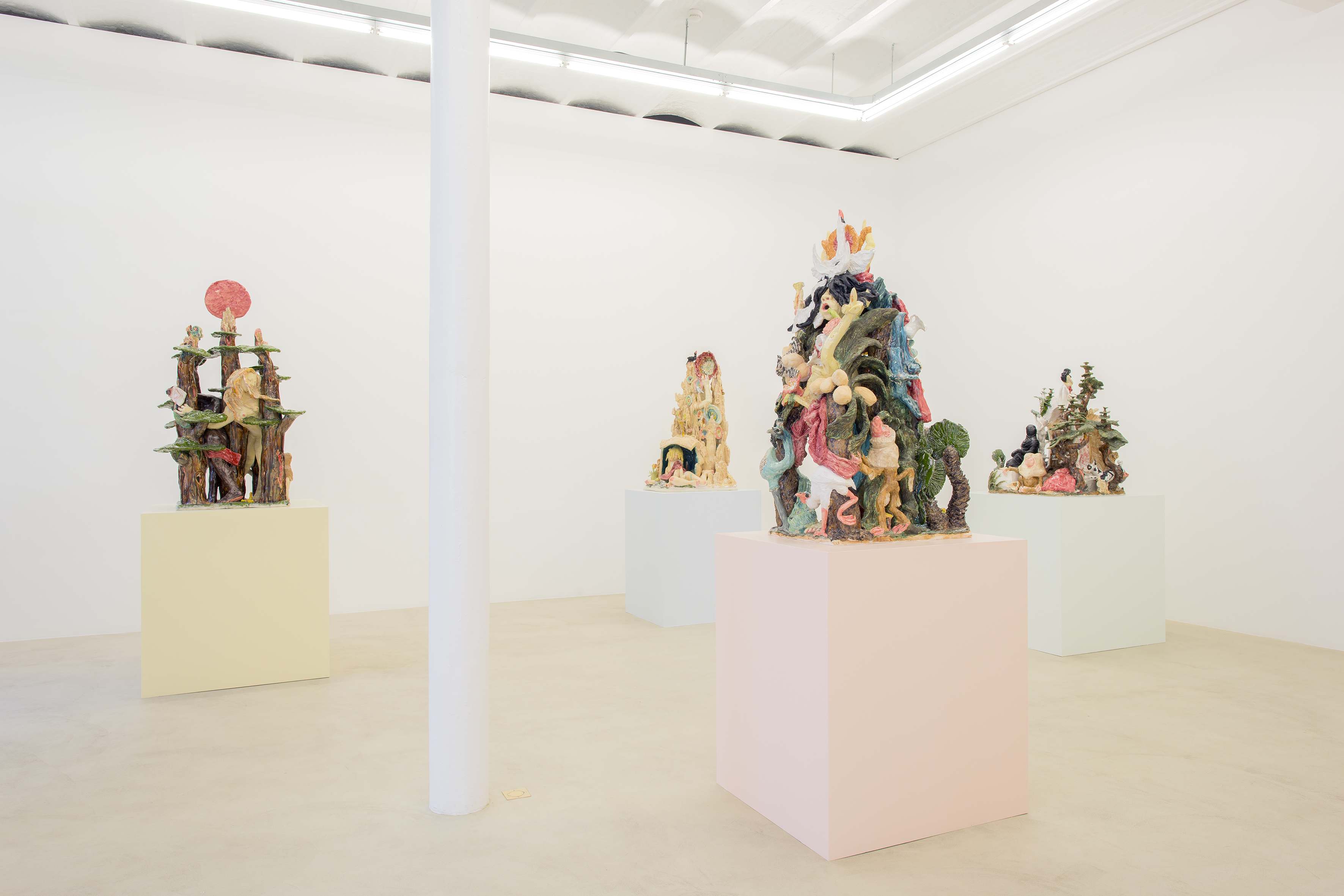
About
The Fingerprint of God
Dumb clay.
Prometheus fashioned man from clay and into the clay Athena breathed life.
Adam was shaped from dust.
God transforms and animates the clay.
God leaves his fingerprint.
"Actaeon and Artemis"
Actaeon, the Hunter, roaming the countryside with his dogs, has come across Artemis, chaste Goddess of the Hunt as she bathes with her female attendant. The goddess is enraged by this intrusion, and transforms Actaeon into a stag. The hunter's dogs, finding their master now unrecognizable, turn on Actaeon, and tear him to pieces.
We see the face of Actaeon framed by the hedge, which divides the stage in two halves, in cameo, white and mute and clouded mid-transformation within the head of a stag. Overhead, atop the hedge rests a full moon. The female moon, disdainful of men, aloof and cold is associated with Artemis. We are faced with a figure of the Artemis of Ephesus whose shoulders are hung with bull testicles.
"Apollo and Daphne"
Apollo pursues the nymph Daphne who flees from the amorous needs of Apollo, effulgent God of Culture. Apollo has insulted Eros, mocking the God of Love's arrows. Both gods are archers. Incensed, Eros sends a lead arrow into Daphne inspiring hatred. Eros then sends a golden arrow into Apollo which inspires love and desire. The nymph, who, as an emulator of Artemis, the sister of Apollo, wanders the woods as a virgin, has already asked her father the river god, Peneus never to force her into marriage even though she is an obviously attractive female pursued by many men.
The god falls in love and the chase is on. Running through the forest they are almost evenly matched, but as Apollo seems ready to catch Daphne on the banks of a river, the nymph calls on her father the river god in desperation to save her which he does by transforming his daughter into a laurel tree. Apollo's arms close around Daphne's body even as it stiffens into wood and bark, her hair turning into leaves and her hands and arms into branches and twigs, her eyes reflecting fear of her pursuer and shock at the results of her plea. We can see the face of Peneus in the waters' currents, flanked by water nymphs who giggle at the transformation of Daphne into an evergreen laurel tree whose branches Apollo, in defeat, vowing everlasting love, will devotedly weave into a wreath to honor poets and musicians, thereby crowning heroes of culture in a triumph of love over lust.
In the sculpture on either side are images of predation and capitulation.
"Echo and Narcissus"
Echo, a mountain nymph with a beautiful voice has been condemned by Hera, as a mindless chatterbox cursed to repeat only the ends of words from sentences of what others have said, a curse issued in punishment for misleading the goddess. While wandering the forest, Echo sees Narcissus chasing deer into nets and follows him, lovestruck. When she timidly approaches the hunter, Echo is callously rejected and lurks nearby in sorrow, eventually swallowed up by cold mountains, lost, her self disappearing, her voice dwindling into an anonymous, servile remnant that resounds along empty crevasses and the abyss of forgotten identity. Narcissus, meanwhile, has fallen by a pool of water, riveted by his own image reflected on the surface, his attraction to himself fully evident. He wastes away, like Echo, an echo of Echo, inward-turning as much as Echo was fascinated by someone one outside of herself. A Narcissus bloom sprouts by the pool. Colorful sonic blooms ripple through the mountains.
"Golem"
Welcome. The Golem is a crudely shaped, uncultivated animated being made out of clay who can be used as a slave under favorable conditions, and under unfavorable conditions will become hostile and dangerous. The Golem is a figure whose path and function are determined by words and letters, animated by the Hebrew word “truth” written on his forehead. He can be deactivated by removing a single letter from “truth” which changes the word to “death”.
A word denoting God written on a piece of paper placed in the mouth of the Golem can also animate the being. In the Talmud Adam is originally a Golem, a mindless, clumsy speechless creation, anthropomorphic, but not fully human having been shaped from dust and close to the divine. The sin of Adam was consciousness. Destruction and creation. The famous Golem of Prague was fashioned to defend Jews from the destruction of antisemitic pogroms and in one version of the story fell in love, but when rejected he became violent, and in another he went murderously berserk, and in another has to be put in a synagogue where he fell to pieces. Europe has its Golems.
"Thou Art That" or "Not This Not That"
The Song of the Poet.
"The Feather of Truth"
The baboon and ibis are representations of the scribe of the gods. The feather of truth was weighed against the heart.
